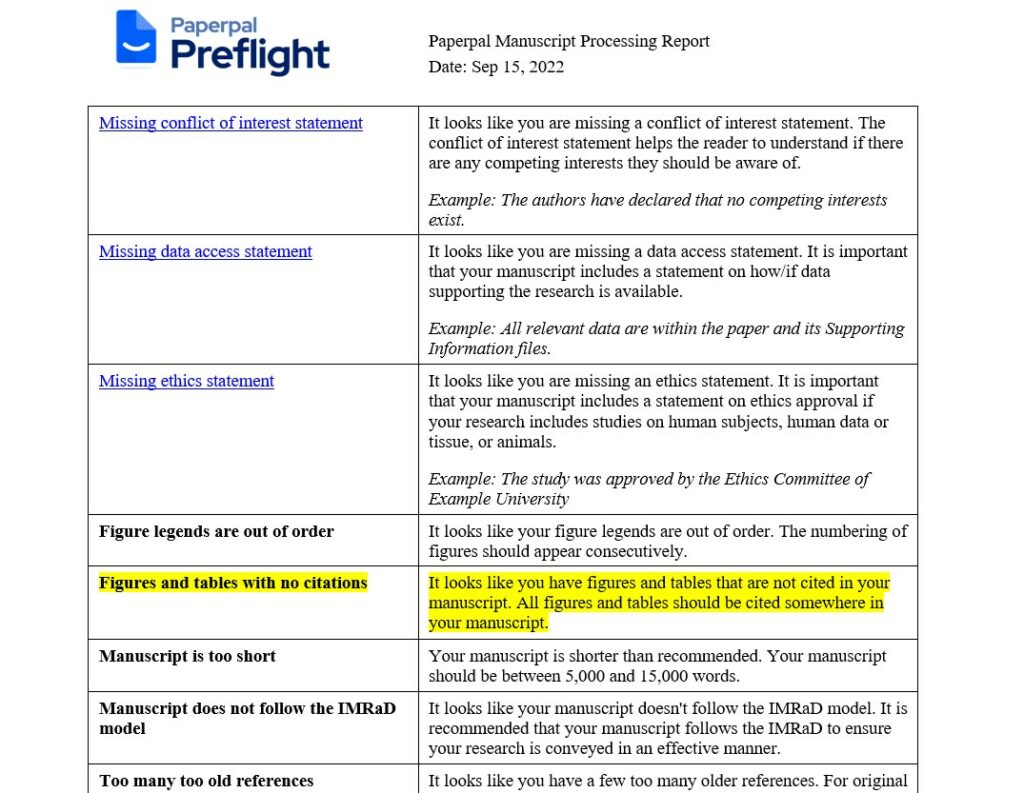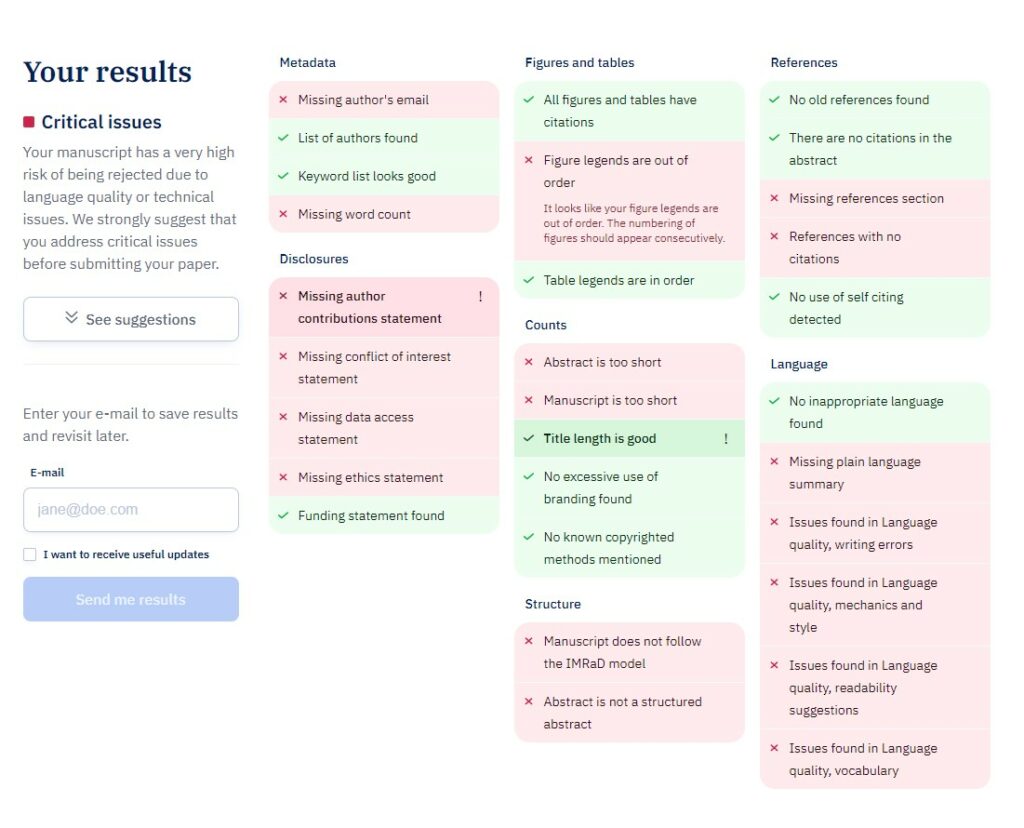The process of getting a research paper published can be a difficult, long-drawn journey. Authors need to overcome several challenges and complete numerous checks to ensure they meet the journal’s submission guidelines or risk being desk rejected. When deciding to pass a manuscript to peer review or defer the process, journal editors look at a range of quality and compliance issues, one of which is the correct use of figures and tables in a research paper. In this article, we look at how you should use tables and figures in a research paper and how Paperpal Preflight can help check that these key visual elements are used correctly before journal submission.
Citations for figures or tables in a research paper
Essentially, a research paper tells a story of research and takes the reader through the researcher’s journey from conceptualization to conclusion. Along this journey, figures and tables that showcase technical data visually aid the reader’s understanding. Therefore, a figure or table in research papers that is not cited or discussed in the main text may be assumed to be irrelevant to the research story being narrated in the manuscript. Considering that figures and tables are often the first objects to be prepared in the manuscript writing process,1 the research narrative should be built around citations to these objects. This brings us to the first point: all figures and tables in a research paper must be cited and discussed in the main text. As shown in Figure 1, Paperpal Preflight checks whether every visual element is mentioned in the main text and provides a detailed report.

Numbering of figures and tables in a research paper
A legend or caption is the text associated with a figure or table in a research paper that identifies it with a unique number and briefly explains what it presents.2 A figure number or table number serves as that unique identifier. Journals typically expect figures and tables to be numbered sequentially in the order in which they appear in the text. In other words, the first figure cited in the text should be numbered as “Figure 1,” the second as “Figure 2,” and so on. This requirement is enforced to ensure the readability and accessibility of visual objects. As shown in Figure 2, Paperpal Preflight warns the author if any table or figure in a research paper is not in sequence.

Following style guides and ensuring consistency
To achieve that perfect presentation, it is important to ensure compliance with any applicable style guide. For instance, some style guides use Roman numerals instead of Arabic numerals for numbering tables in research papers (e.g., “Table II” instead of “Table 2”). Moreover, some style guides require the use of the abbreviation “Fig.” when citing a figure in the middle of a sentence.3 Additionally, certain style guides use a period at the end of a figure or table legend, whereas other style guides do not. If the target journal does not require compliance with any style guide, authors should ensure that the style they use is followed consistently throughout the research paper. As Figure 3 shows, Paperpal Preflight checks for various consistency issues, including the use of the abbreviation “Fig.”

Authors working on their manuscript over time may fail to pick up on these important yet avoidable errors, which can hurt or delay your chances of publication success. So, to ensure the correct use of tables and figures in your research paper, just upload it to Paperpal Preflight and let the smart tool work its magic in minutes. This powerful and comprehensive AI manuscript readiness check provides detailed and actionable comments on issues with legends, numbering, and consistency in figures and tables used in your research paper. It’s the easiest, fastest way to ensure your article complies with key journal guidelines, allowing you to focus on the issues that really matter. Don’t wait, try Paperpal Preflight now!

Paperpal Preflight is currently advocated by 13 leading publishers carrying over 300 journals and is available to use directly from the journal website. If you do not have a target journal in mind, you can use the standard configuration and check your work with Paperpal for Manuscripts.
References
- Cooper, I. D. (2015). How to write an original research paper (and get it published). Journal of the Medical Library Association: JMLA, 103(2), 67. DOI: 10.3163/1536-5050.103.2.001
- The Chicago Manual of Style, 17th ed, 3.21–3.28.
- Submission guidelines of The Cryosphere. Available at: https://www.the-cryosphere.net/submission.html#figurestables [Accessed September 15, 2022].

